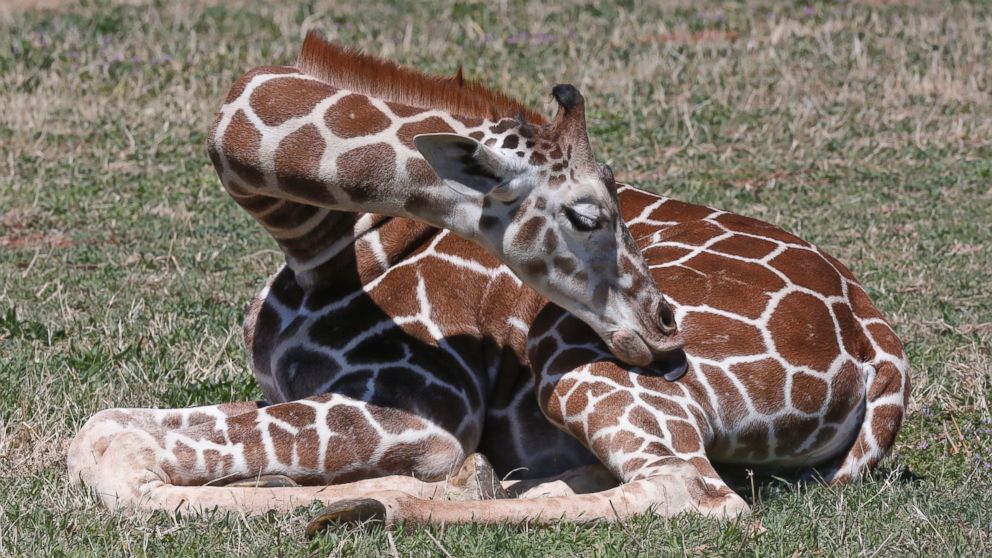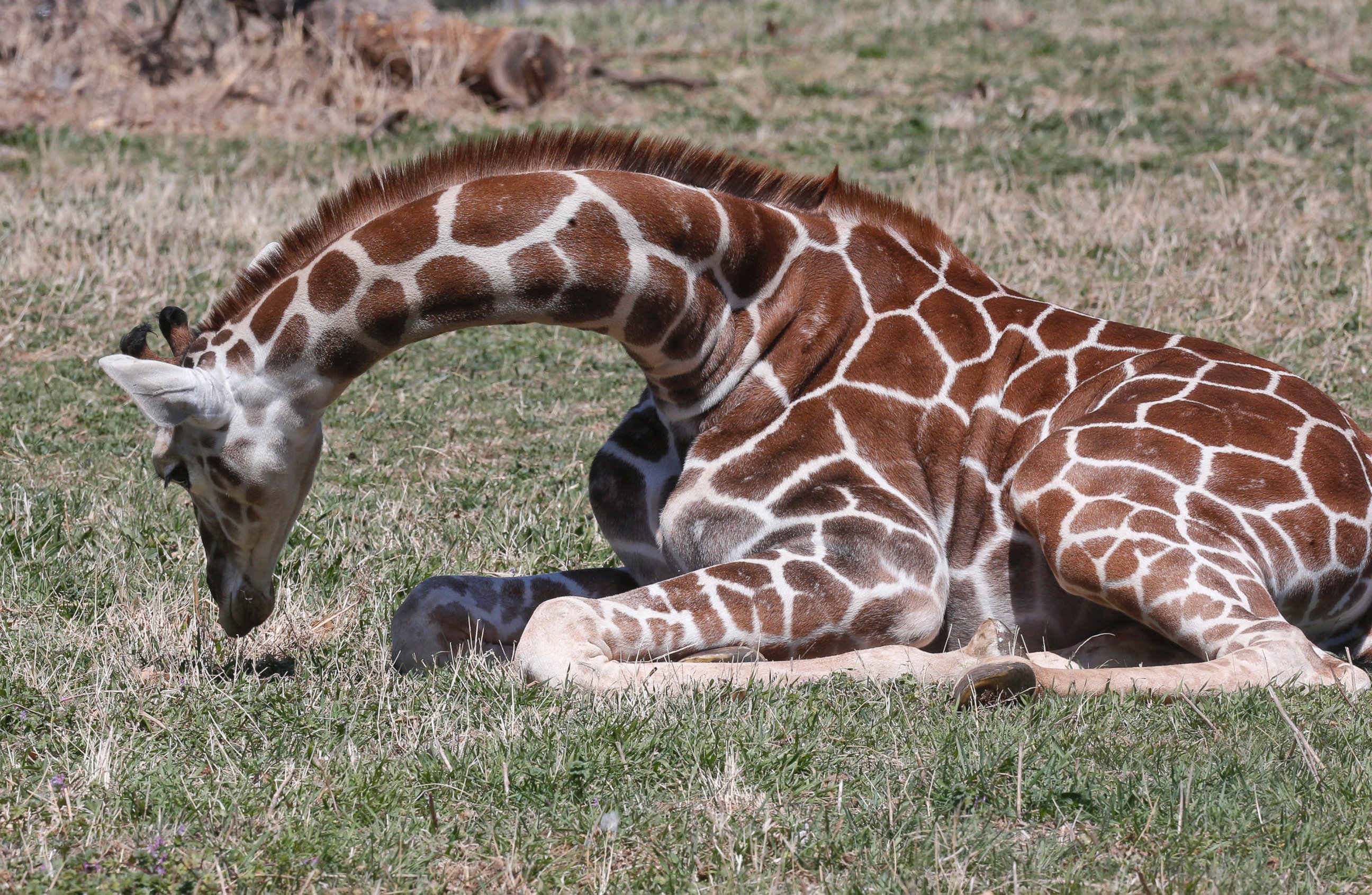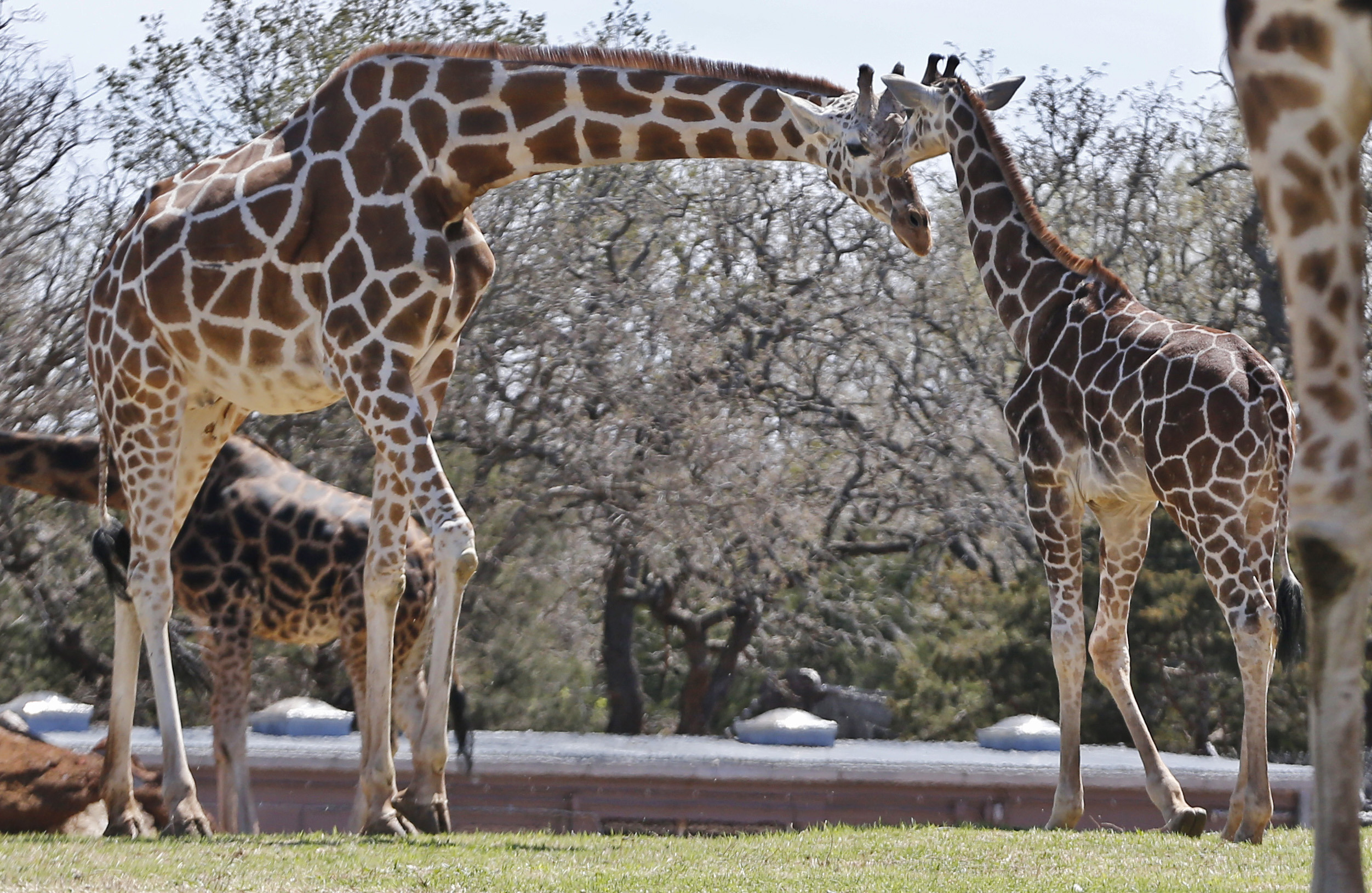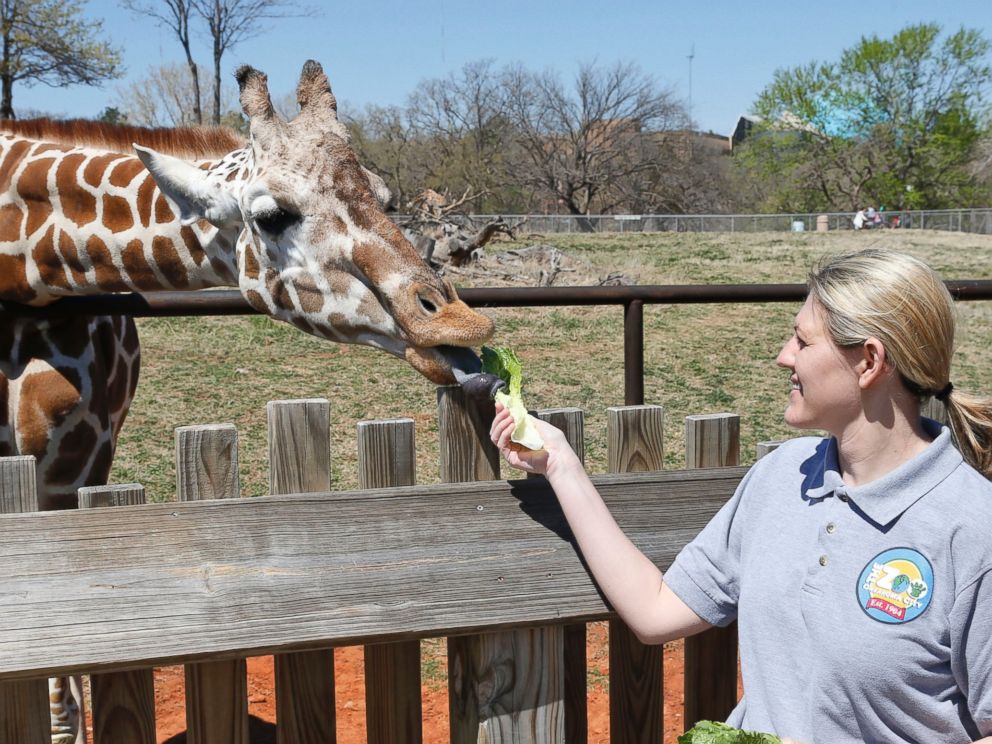Baby Giraffe’s Neck Surgery a Long Shot, Zoo Says
The 8-foot-tall baby has a fatal birth defect, the zoo says.

April 8, 2014— -- A 6-month-old giraffe at the Oklahoma City Zoo is having surgery today to fix a fatal birth defect, but zoo staff say there’s only a 50 percent chance she’ll survive.
The 8-foot-tall "baby," named Kyah, has a wayward blood vessel wrapped around her esophagus – the flexible tube that shuttles food down her long neck.
"It’s likely a blood vessel coming off the aorta that should have absorbed when she was still in the womb," zoo spokeswoman Tara Henson told ABCNews.com, describing the results of Kyah’s endoscopy two weeks ago. “But it didn’t, and now it’s causing a stricture on her esophagus -– her food tube."

The stricture is compressing the tube, causing Kyah to regurgitate her food, according to Henson. Zookeepers first noticed the problem when Kyah was just 6 weeks old and nursing. But her symptoms worsened when she started eating solid food.
"Right now she’s still getting most of her nutrition from nursing, but she’s at the age where she should start to wean,” said Henson, explaining the timing of today’s procedure. "So the surgeons will go in and take care of that blood vessel. That’s really the only thing that’s wrong with her.”

Kyah was transported to Oklahoma State University's Center for Veterinary Health Sciences, where surgeons will open her Kyah’s neck and chest to remove the rogue vessel –- a procedure common in dogs but a tall order for the 525-pound giraffe.
"Anesthesia is challenge for anyone -– humans and animals,” Henson said. "But with giraffes it’s especially challenging. Look how long their necks are, and how far the blood has to pump!"
Kyah’s has 50:50 odds of surviving the procedure, according to Henson. But without surgery, she’s certain to starve to death.
“She won’t be able to eat,” Henson said. “Any chance is better than no chance.”

If the surgery’s successful, Kyah could be back on her feet in less than two weeks.
"Animals have a remarkable ability to hide illness, because in the wild they would become prey," Henson said, explaining how zoo staff will have to coax Kyah into “barn rest" instead of bed rest.
"We are hopeful,” Henson said of the surgery, which is likely to take the “better part of the day.”
"We’re cautiously optimistic,” she added.




